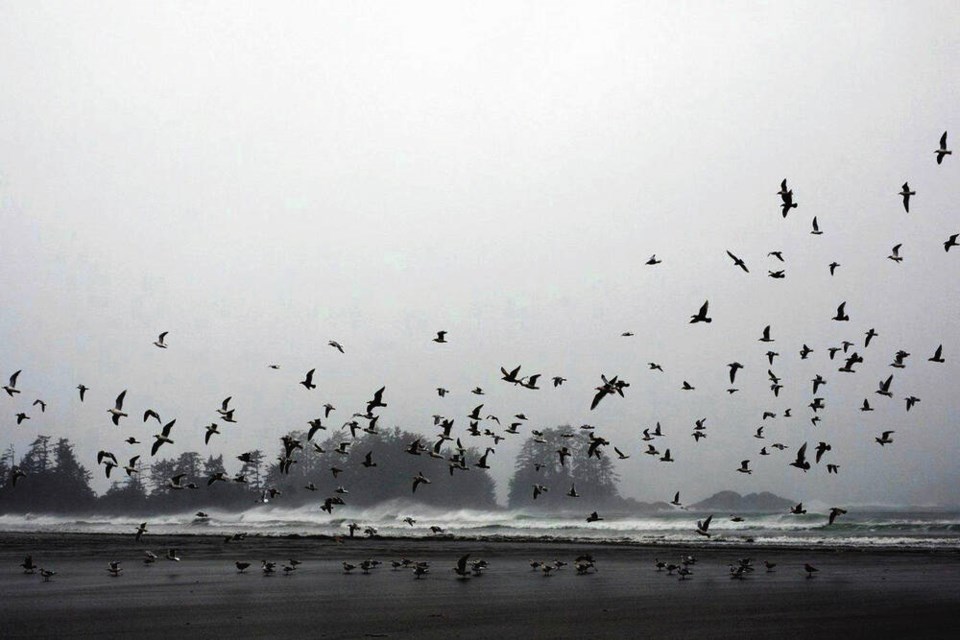Looking out from her living room window toward the Hesquiaht harbour, Dianne Ignace marvelled at a bright rainbow that emerged in the sky. Within minutes, it was swallowed by thick, gray clouds. Then, came the hail.
“Today is one of those days where every 15 minutes the weather has been changing,” she said. “That’s the phenomenon that I’ve been noticing — the speed of change around this weather is way too fast. It doesn’t give me any time to plan.”
Ignace has been living in the remote peninsula on Vancouver Island’s west coast since 1975. She is no stranger to battling out strong rainstorms, but as of late, they have become increasingly unpredictable.
“The winds are changing faster,” she said. “You can get different [wind] direction on the water five or six times in one day.”
This past fall was the wettest Ignace has seen in the past 10 years. While nothing was damaged, she said the tides that coincide with the rainstorms have been pulling the gravel off the beach in front of her house over the past three years.
“You can see the bedrock all along the coast,” she said. “It’s changing the topography in the bay here.”
The record-breaking rainfall that hit British Columbia this fall could be the new normal, warns Environment and Climate Change sa¹úŒÊŽ«Ãœ.
“It’s very consistent with what climate projections describe [of] the reality coming for us,” said Armel Castellan, a warning preparedness meteorologist with the agency. “This was an example of what we can expect more of.”
The entire season, from September to the end of November, was the wettest on record for both Nanaimo and Gonzales in Victoria, which has data dating back to 1899. Nanaimo experienced rainfalls 181.3 per cent above normal, and Victoria saw rain 221.5 per cent above normal.
“That is very absurd to me,” Castellan said.
Historically, these types of events would only occur once in every 100 years, but Castellan said that number is projected to change to one in every 50 or 25 years going forward.
“The deck is stacked increasingly over the coming years,” he said.
Tofino typically gets 7.4 days of rain that reaches above 25 millimetres throughout November. But this November, there were 14 days of rain that reached above 25 millimetres, resulting in rainfall 175.6 per cent above normal, said Castellan.
“These [floods] have big consequences, not just on the Lower Mainland and the diking system around Sumas Prairie, but anywhere on the south coast with any infrastructure and population density whatsoever,” said Castellan.
Global temperatures have risen by 1.2 C since pre-industrial levels, and sa¹úŒÊŽ«Ãœ is warming twice as fast as the global average, he said.
As temperatures rise, the air has a greater capacity to hold more water vapour. One of the ways the atmosphere balances itself out is for the moist, subtropical air to travel north through a narrow corridor, otherwise known as an atmospheric river. The phenomena used to be referred to as “moist conveyor belts.”
With more water vapour in the air, Castellan said experts are projecting atmospheric rivers to double in strength in coming years, and decades.
The unpredictable weather patterns mean that Ignace is not able to leave her house as often.
“When we want to go to town, we’re getting into wishy-washy water,” she said. “The waves are coming at you from every direction … it’s making travel a lot harder.”
— Ha-Shilth-Sa



